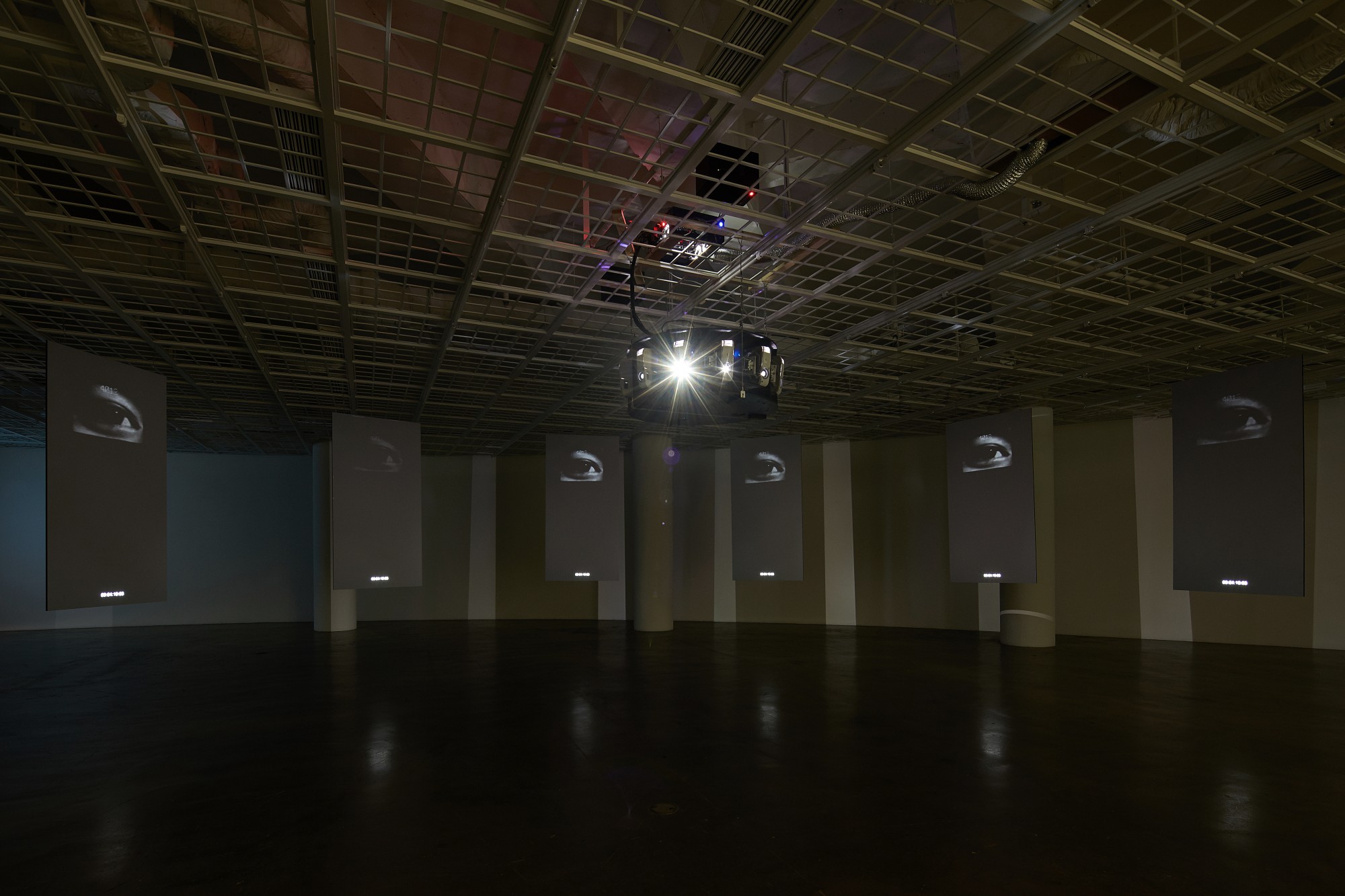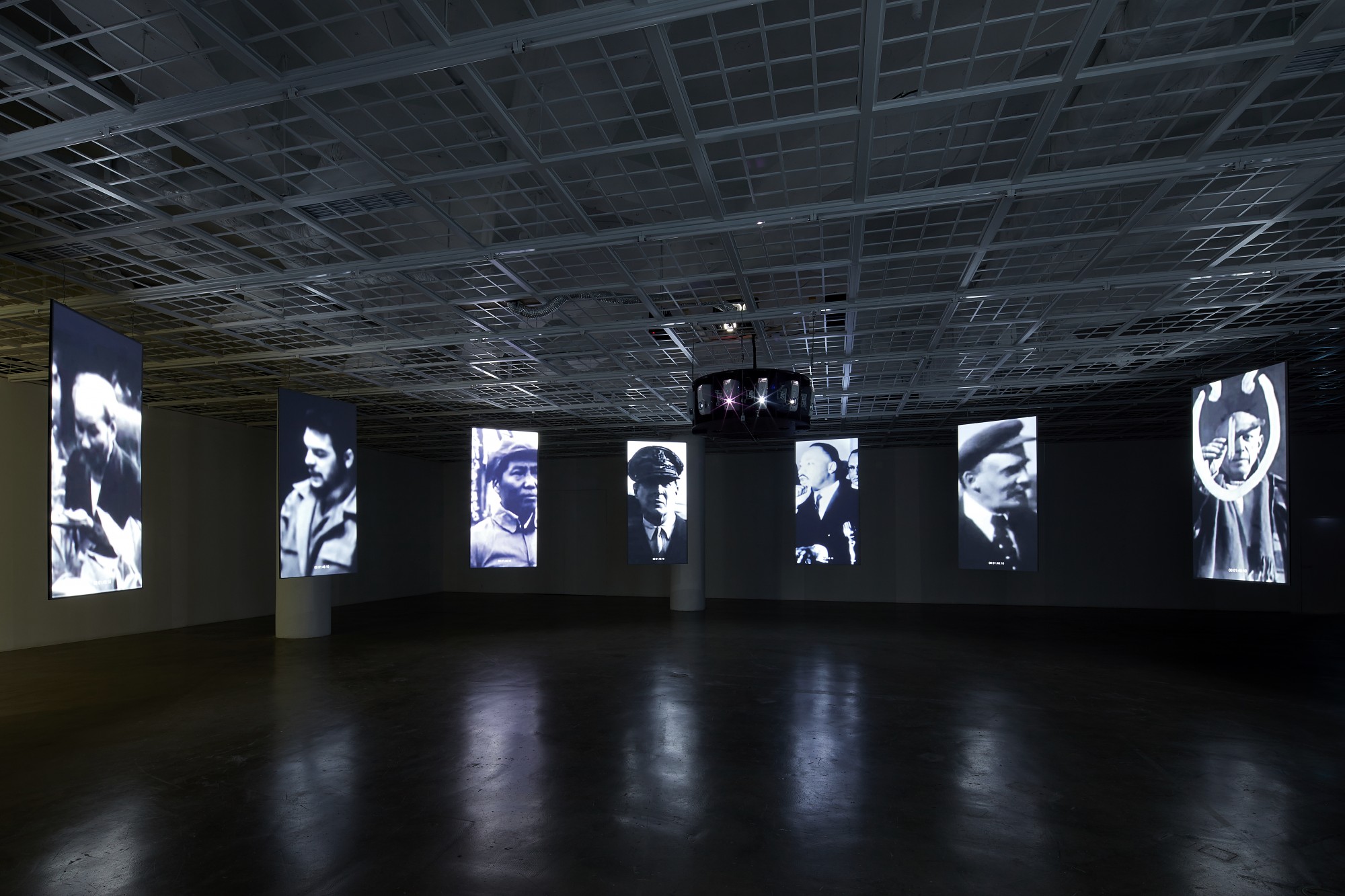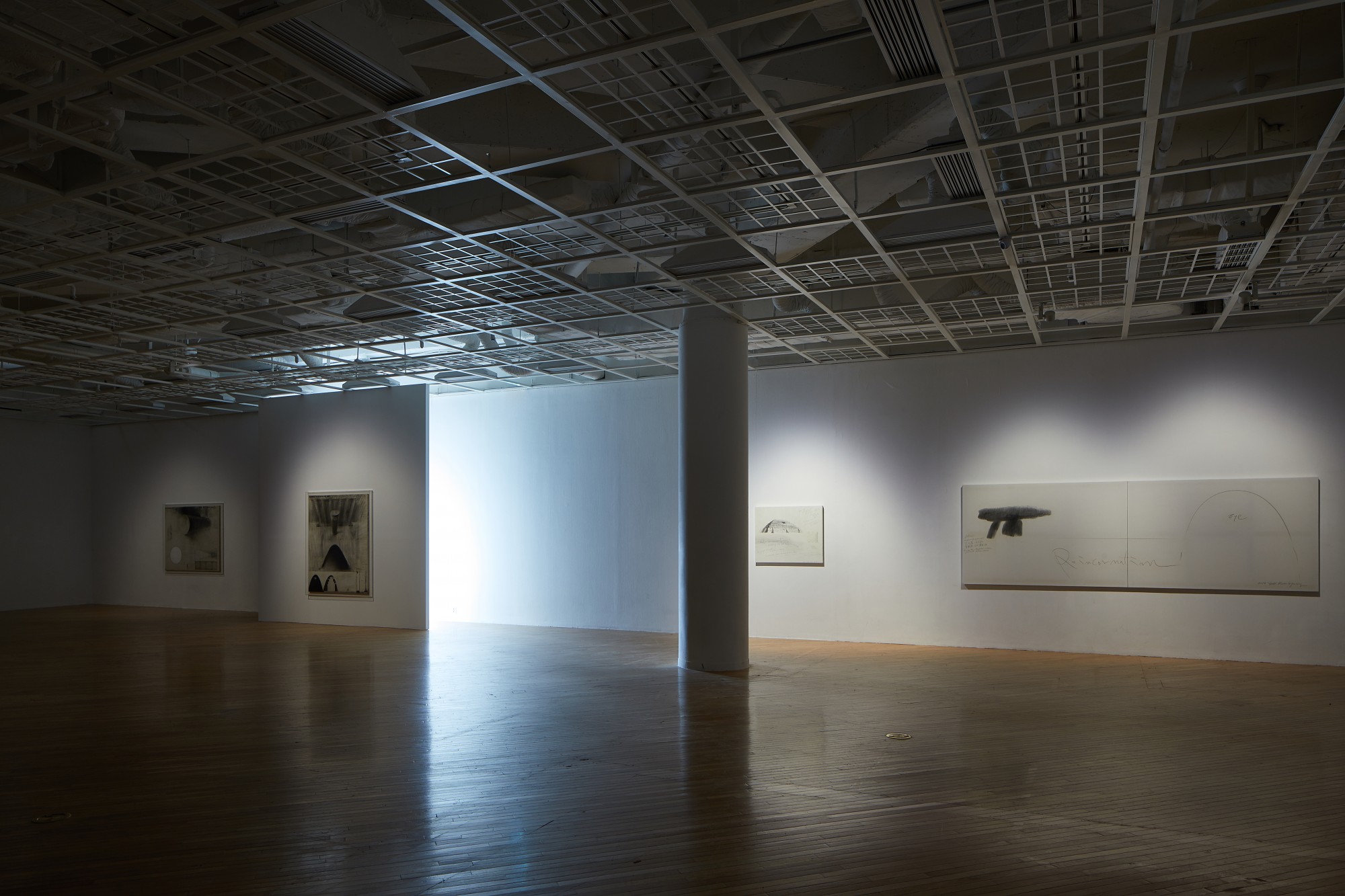Yook Keun Byung: Survival is History
June 15 – August 5, 2018
Yook Keun Byung: Survival is History
People have eyes.
The purpose of the eye is to see, not to be seen.
As that eye is made visible, confrontation goes away.
The eye signifies everything there is to historical consciousness.
The opposition between yin and yang – the “eye” that connects tradition to modernity –
makes opposing concepts one.
As the seeing eye and the visible eye intersect,
we are made to experience life, death, the past, the present, and the future all at once.
We need only look at the bright eyes of children.
What question or answer is necessary?
(from the Artist’s Notes) [1]
Survival is History, a solo exhibition by the established artist Yook Keun Byung (born in 1957 in Cheongju) uses the eye upon the world and the intersecting gaze as means of questioning the nature of life and fundamental issues of the world. Beginning his artistic career with video and installation work in the late 1980s, the artist has used the eye as a motif for the past 30 years to address matters of the gaze upon history, dialogue with others, and the link between life and death. By bringing new media together with the traditional form of the grave, he has attempted to answer anthropological questions about matters of history, life, and death.
Located on the museum’s second floor, the 12-channel video installation The Statues of the Twelve Earthly Branches includes portraits of 12 leading figures in contemporary world history. Blinking eyes slowly appear and disappear against the backdrop of these figures’ images, causing us to become aware of ourselves within the world and ponder our connection to history. A century’s worth of time passes horizontally over 12 circularly arranged screens, while the sound of a baby’s heartbeat in the womb connects us with ancient times and the times of humanity’s origins.
On the third floor, the artist’s significant work The Sound of Landscape + Eye for Field is presented in a new form. Taking the form of a moving eye within a dirt-covered grave, this installation work incorporates an everlasting world of life and death. A place for the dead, the grave symbolizes the history of the individual. Incorporating a steady, staring gaze, Yook’s graves have been described by the critic Tadashi Okamura as a state where life and death are linked. “Yook Keun Byung dares to make graves that look like people,” he writes. “The graves are not smoothly piled, but take a form like that of a standing or seated person. The grave’s shape should be recalling the form of the deceased who rests within, but the graves created by Yook Keun Byung are treated as living people.” 각주2 This also ties into the role of the grave’s material – the earth – which is both a return and regeneration of the human body.
Begun in 1989, this work was introduced at the 1992 documenta event in Kassel. Installed in a plaza at Kassel’s Fridericianum museum, The Sound of Landscape + Eye for Field = Rendezvous drew attention for its bold composition. Yook’s bold artistic approach toward grand narratives was evident in the work, for which a large earthen burial mound was placed in the center of the plaza and a large pillar erected across from it at the building entrance, with videos of moving eyes installed within each of them – dubbed the “eastern eye” and “western eye.” The exhibition at Art Sonje Center also includes drawings recording the documenta installation and the installation of Survival is History at the 1995 Lyon Biennale, along with new drawings produced by the artist while preparing for this show. Located on a table to one side of the third-floor space is Time in the Time, a series linked to Survival is History. The series of images inside the cubic box show various scenes of war, disaster, and other global events and tragedies that have emerged over the course of the modern and contemporary eras – while reaffirming the human eye that produces and observes them.
Yook’s work has been described by the artist Lee Ufan as a “declaration of the death of community and an expression of the will to stand the self outside of the self,” which “may first and foremost represent the fervent desire to transcend modernity and find the perspective of a greater-seeming universe.” [3]Indeed, Yook’s ongoing attempts over the past three decades to tackle huge and inaccessible questions stems from his firm belief that art “is a wind that is basic to life,” and that the “purpose and function of art is to exist and infuse energy like the wind.”
[1] Yook Keun Byung, EYE, Nexus, 2016, p.17
[2] Tadashi Okura, The Grave’s Eye Subtly Moves, ibid., p. 26
[3] Lee Ufan, Place of Incongruity, ibid., p. 174.
About the Artist
Yook Keun Byung has drawn international notice for his video installation work since the early 1990s. Using the image of a single blinking eye as his base, his work has shared reflections on the world that cut across divisions of subject and object, East and West, tradition and modernity. His work has spanned a wide range of genres including drawing, painting, performance, and audio/visual installation. He was invited to the 1992 documenta in Kassel and the 1995 Lyon Biennale. His first solo exhibition Japan Project (1993) – staged simultaneously in three cities (Tokyo, Osaka, and Sapporo) – has been followed by others at Kirin Plaza Osaka (1994) and Tokyo’s Gallery Q (2003). He has also been involved in ongoing activities in Korea, including the solo exhibitions Dream for Survival (1998, Kukje Gallery) and VIDEOCRACY (2012, Ilmin Museum of Art) and participation in the 2014 and 2016 Busan Biennale.
Opening Reception: 2018. 6. 14 (Thu), 6 pm





